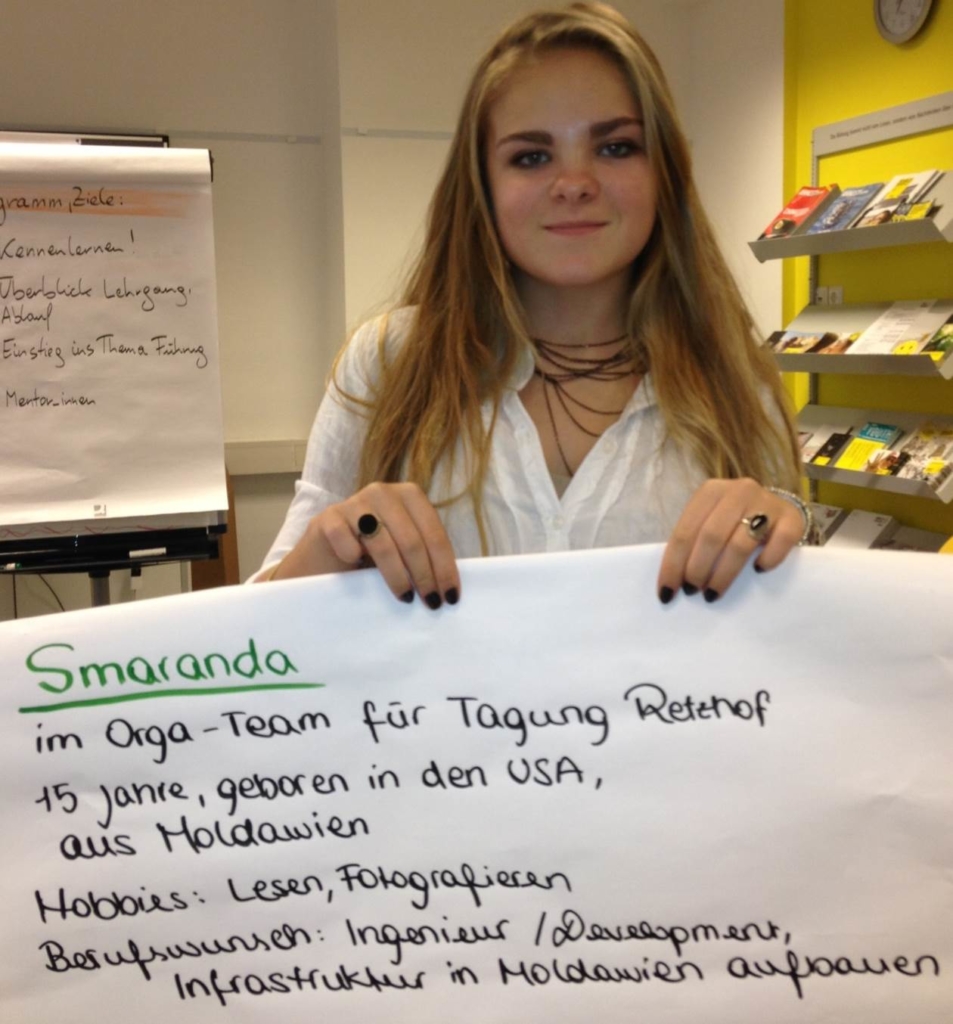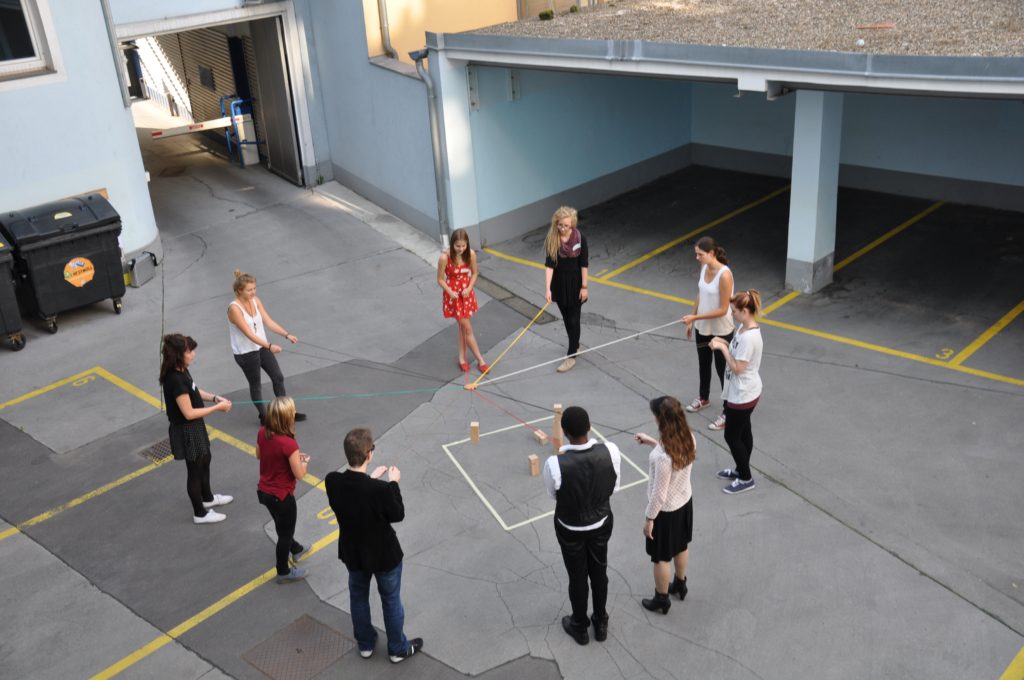When driven young activists requested training, Amnesty Austria answered the call. Smaranda shares her experience of the Leadership Programme, which has been turning inspired Amnesty activists into leaders for the human rights movement for the last five years.

“I’m always participating in projects. Before I joined the programme I had already been at Amnesty for a year,” says Smaranda eagerly, a young activist who took part in Amnesty Austria’s 2014 Leadership Programme. The Programme has been training and preparing Amnesty activists for leadership positions within the organisation since 2010.
Smaranda dedicated six weekends to the course to learn new skills and gain organizational knowledge while empowering herself and fellow course participants to become strong leaders for the movement.
“I am aspiring for a career as a civil engineer and I want to study project planning, so I was really interested in learning more about project leading,” says Smaranda, explaining what drove her to apply for the programme.
To join the programme, the only Amnesty Academy course exclusively available to Amnesty activists, prospective students must submit a motivational letter to the Amnesty Austria International Board who select 16 applicants to receive the leadership training.
“There were people from all backgrounds and nationalities”, says Smaranda. “I was 17 at the time so I was the youngest, but there were people from Egypt, Tunisia and many other places. I really liked the atmosphere, people were really cool. Everybody was glad to be there.”
The course is divided into a number of workshops and activities. Activists participate in workshops to learn skills in project management, finance, and moderation techniques, increase their human rights knowledge and gain in-depth organisational awareness of Amnesty International, as well as reach their main objective of building up their leadership skills.
“Some workshops were similar to lectures, others were more interactive, with lots of group wok,” explains Smaranda. “My favourite was the ‘Tower of Power’ exercise. This was done as the opening session of the programme.”
This exercise consists of building a tower between all the participants. The group of activists are given a toolkit with eight wooden blocks and a crane connected to cords. Each participant has to take a single cord and build a tower together as a team, in a measured space, and in a given time. Before the building process starts, a leader is chosen. This person is the only one without a rope, and it is his or her responsibility to lead the group.
The ‘tower of power’ exercise is explained in this video.
“This exercise showed us what kind of leader people could be,” says Smaranda. “There were some people who had been really quiet all along who started to get really bossy, which was interesting because I did not expect that.”
After the exercise, participants are encouraged to reflect on the value of cooperation and communication. They also debate which leadership skills are most valued and how they can most effectively provide feedback to each other.
“There was a long discussion after the exercise where people told each other what they thought. Some people felt a bit attacked when others said they saw them as aggressive leaders, it got quite emotional,” says Smaranda.

Smaranda took part in another activity to help participants find the most suitable form of activism for them. This activity requires the participants to have some prior knowledge of each other, so is usually done at the end of one of the workshops.
According to Gudrun Rabussay-Schwald, one of the Leadership Programme trainers, many of the people who participate in Amnesty´s workshops are interested in human rights but they are often unsure on where their preferences lie and which forms of activism are suitable for them. This exercise is designed to help each activist find his or her strengths and opportunities in human rights activism.
It starts by pinning activism cards on the wall. The cards indicate various forms of activism, for example: Organize a demonstration; Join a Non-governmental organization; Support disadvantaged children in their reading skills, Awareness as consumer; and so on. The cards are a mixture of ‘low effort activism’ and more complex and time-consuming ways to support human rights. Activists are encouraged to add their own ideas to the wall.
I learnt to be a bit more sensitive when it comes to leading a group. It often comes naturally to me to take over the part of the person in charge. During the Leadership Programme I tried to lead in a constructive way. I learnt to be part of the group, instead of only leading.
Smaranda
After the cards are set up participants form small groups of up to three people. One of the people in each group leaves the room while the remaining two single out three forms of activities that they believe would be suitable for this person. Afterwards they write the activities on pin-cards, the person outside returns, and the others attach the card onto the back of the participant who had left the room. This procedure is repeated until everybody has cards attached to their backs.
Within the groups the participants can now take a look at which suggestions they have received. The other group members briefly explain why they chose these activities for them. Each person comments on whether she or he thinks it is realistic to become engaged in such a form of action. This activity ends with a sequence of self-reflection: every participant writes down one or two things he or she wants to realize in the near future.
This session is an important time for the activists to internalise their self-reflection and the feedback from their peers. It enables these leaders-in-the-making to take time to think about decisions that will affect their future behaviour. The act of writing solidifies these thoughts and is proven to help learners carry their new skills and knowledge out of the training room and into their daily lives and future activities.
The Leadership Programme ends with a project presentation at Amnesty Austria’s Annual General Meeting and a ceremony, where every participant is encouraged to put their knowledge into practice and set up their own human rights project with Amnesty.
“The programme was definitely very helpful, in both my career ambitions and in life in general,” says Smaranda. “I learnt to be a bit more sensitive when it comes to leading a group. It often comes naturally to me to take over the part of the person in charge. During the Leadership Programme I tried to lead in a constructive way. I learnt to be part of the group, instead of only leading.”
Would Smaranda recommend this programme to others? She is enthusiastic: “I think it would be a great opportunity for other Amnesty activists in other countries.”


